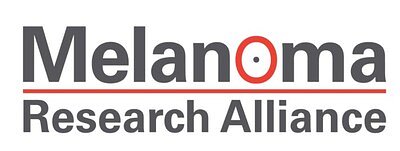
Silent Epidemic: Rising Melanoma Rates Threaten Veterans' Health
A new report reveals a concerning increase in melanoma diagnoses among U.S. military personnel and veterans, highlighting unique risk factors and a growing need for targeted research and prevention efforts.
Silent Epidemic: Rising Melanoma Rates Threaten Veterans' Health
NEW YORK, NY – November 11, 2025 – A concerning trend is emerging within the veteran community: a significant rise in melanoma diagnoses. While melanoma rates are increasing nationally, new data reveals U.S. military personnel and veterans face disproportionately higher risks, driven by unique occupational hazards and cumulative sun exposure. The Melanoma Research Alliance (MRA) is sounding the alarm, urging increased funding, proactive screening programs, and enhanced sun-safety education tailored to those who have served.
A Higher Risk of Diagnosis
Veterans are facing an 18% higher chance of being diagnosed with Stage 3 melanoma and a 13% higher chance with Stage 4 compared to civilians, according to recent studies. This indicates a troubling pattern: delayed diagnoses and more advanced stages of the disease within this population. The increased risk isn’t uniform across all branches of service, however, with the Air Force consistently reporting higher rates of melanoma among its personnel. “We're seeing a concerning trend of later-stage diagnoses in veterans, suggesting a need for more aggressive screening and awareness campaigns,” said one expert involved in the research.
Aircrew, in particular, face an even greater threat. A recent Department of Defense study found that they have an 87% higher rate of melanoma compared to the general population. This is attributed to a combination of factors: prolonged exposure to intense UV radiation at high altitudes, combined with the effects of cosmic radiation. “The altitude significantly increases UV exposure, and the reflective surfaces at that height intensify the effect. It's a perfect storm for skin damage,” explained a dermatologist specializing in military health. The unique occupational demands often prioritize mission completion over personal protective measures, exacerbating the risk.
Understanding the Unique Risks
The increased risk isn't just about time spent outdoors. Military service introduces a complex array of environmental and occupational hazards. Prolonged deployments to regions with high UV indexes, like deserts and tropical environments, contribute significantly. Coupled with this is the lack of consistent sun protection due to the demands of training and operational requirements. “Sunscreen application isn’t always practical in certain scenarios, and awareness about the long-term effects of sun exposure isn’t always prioritized,” said one veteran who participated in a research survey.
Beyond the environmental factors, the cumulative effects of years of service are playing a role. “It’s not just about a single sunburn during a deployment. It’s the years of accumulated sun exposure, combined with potential genetic predispositions, that are driving these higher rates,” explained a researcher studying melanoma in veterans. Furthermore, the aging veteran population is contributing to the rising incidence, as the risk of melanoma increases with age.
The Projected Increase and Funding Concerns
The MRA projects that melanoma will become the second most common cancer among veterans by 2040. This grim prediction underscores the urgency of addressing the issue now. The projection is based on statistical modeling that considers the aging veteran population, the cumulative effects of UV exposure, and demographic trends. “We’re facing a potential crisis if we don’t act proactively. The number of veterans diagnosed with melanoma is expected to increase significantly in the coming years,” warned a public health official.
To combat this growing threat, the MRA is advocating for increased funding for melanoma research, particularly within the Department of Defense's Congressionally Directed Medical Research Programs (CDMRP). The CDMRP has allocated $220 million to the Melanoma Research Program (MRP) since 2019, supporting critical research initiatives. However, the MRA emphasizes the need for sustained funding to ensure continued progress. “The CDMRP is a vital resource for melanoma research, but we need to ensure that funding levels are maintained and increased to meet the growing challenge,” said a representative from the MRA. The MRP has a specific focus on research relevant to military health, encouraging collaborations with VA and DoD institutions.
Several organizations are already working to address the issue. The Department of Veterans Affairs is conducting research on melanoma among veterans, and the American Academy of Dermatology is raising awareness about the increased risk. However, more collaboration is needed to ensure that veterans receive the care and support they deserve. The MRA is actively collaborating with the DoD and VA on research initiatives, examining anonymized health records to identify risk factors and develop targeted interventions. They’ve also partnered with organizations like Apex Skin, which provides free scar revisions to injured veterans and encourages proactive screenings.
📝 This article is still being updated
Are you a relevant expert who could contribute your opinion or insights to this article? We'd love to hear from you. We will give you full credit for your contribution.
Contribute Your Expertise →